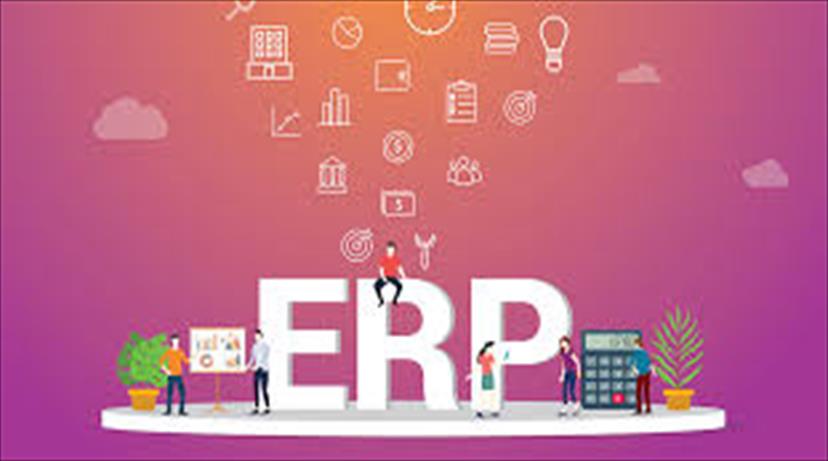One of the best company to work and IT solutions. Delivered product quickly and very fast. It was really mice working with them. I will give them move orders.
How Organizations with ERP Can Benefit From Process Mining
ERP technology eliminates unnecessary processes and organizes work to minimize time spent on tasks.

Enterprise Resource Planning (ERP) systems boast a remarkable list of advantages for businesses that implement them. They streamline business operations, stimulate customer satisfaction, and keep a business’s most significant- " data " regulated and stable to name a few. The anticipated outcome is prompt business expansion and considerable ROI.
ERP is moreover known to be tough to supervise, and costly—a real headache to reach the usefulness. Around 50% of ERP executions fail the first time around according to a Technology reports by Tritan Solutions.
Fortunately, process mining can enable you to mitigate the challenges that come with implementing and supervising an ERP. In this blog, we'll tell you few ways that process mining can be utilized in convergence with ERP to optimize company growth and formulate a creative business strategy.
• ERP System Implementation and Data Migration
Whether you’re introducing an ERP into your company for the first time or migrating data from an old ERP system to a new one, the initial steps are going to be the same: select the team and key players affected; formulate your strategy with well-defined purposes, objectives, and risks; clean up and organize your data.
When it comes to your data, one of the vastly crucial aspects is about surveying your procedures before you implement the new system. This step is where companies make the large and potentially costly assumption that they comprehend how their company processes work and avoiding the data. The result could be integrating the same inefficient processes into the new ERP system.
Those who do make the effort to comprehend and enhance procedures before the migration frequently runs into issues with time. Conventional methods of mapping out process workflows via internal interviews will constantly take additional time to finalize and rack up money along the way.
Process Mining collects the data from your ERP database and automatically discovers business procedures, exhibiting the method workflow and deviations and the resources involved. Full visibility into the end-to-end procedure removes the necessity to conduct interviews, saving time and money.
You can instantly view each procedure activity and glimpse its duration transition times, reworks, cost, and KPI alignment. Quick, data-backed process improvements can be made from these insights to assure that your new ERP starts with high-performing, streamlined processes from the get-go.
• Training Users on the New System
After the new system has been set up, it’s time to train employees in the new skills they’ll require to utilize the software. There’s invariably a learning curve when altering to a new system. But leaving users’ aptitude of the new skills unchecked for too long will substantiate to employees that they are executing activities correctly even if they aren’t and necessitate more effort later on to retrain employees that have to unlearn what they’ve been doing for months.
Process mining can deliver insights into the process activities to see if users are executing activities as anticipated. Conformance checking distinguishes the tangible procedure from the expected procedure, immediately showing where deviations are occurring, their cost , frequency, and the root cause.
You can utilize conformance checking every time you have to educate users to utilize new technology. Finding out unwanted procedure behavior a few weeks after training rather than months can save time, money, and effort in the long run and keep compliance on target.

• Creating Good ERP Habits
Let’s take a step back and look at the greater picture. ERP is one of the most business-critical systems in a company. It’s the center for all data connecting your key operational and business procedures, many of which are cross-departmental.
And yet, too many IT companies don’t give it the reasonable attention it deserves. Maybe they’ve made every upgrade available, centralized all possible systems, educated every last employee. But it’s just not working—they aren’t receiving the advantages they were vowed with ERP.
Introducing and retaining good patterns is crucial in keeping your ERP system prosperous and continuously boosting ROI. This is particularly true when it comes to assessing the procedures involved. There’s a lot of vigor on healthy habits for ERP implementation, but what about the day-to-day health of your ERP?
Procedures are shifting all the time. As the business thrives, there needs to be a thorough survey of how the procedures are thriving with it or failing to meet the demands of a changing company. Are you aware of when and how constantly your procedures are changing? Are there unexpected changes causing compliance issues or excessive reworks?
• Here are some of the ways that process mining’s various abilities can enable your business to maintain a healthy ERP system.
1) Discover Your As-Is Process
Your as-is process could glimpse as entirely different than what you anticipate. Depending on process mapping you won’t last year or even months ago enables you to get a real look into how your processes are running today. Process mining utilizes current data to automatically exhibit how your procedure is running today.
2) Discover Business Rules
Business rules give clarity to process behavior. They enable a business to operate better through enormous procedure control. Comprehending the policies and regulations that mold customer experience can steer business decisions that develop extra agile procedures.
The business rule miner is not a standard procedure mining capability accessible in all solutions. Choosing a progressive process mining solution with the business rule miner capability, like Process Mining, means you can automatically discover the logic behind the regulations that guide process behavior and recognize why a particular path is followed in a process based on the discovered business rules. Once found out, rules can be normalized and even automated to cut costs and align with business strategy.
3) Automate ERP Processes
One of ERP’s tremendous advantages is the automation of core business procedures. Adding additional RPA (Robotic Process Automation) to back-end processes also reduces expenses while boosting productivity and accuracy. It’s effortlessly scalable and can be ramped up or diminished according to business necessities. RPA also generates data that can be evaluated to support rapid process development.
Process Mining assists RPA implementation by specifying the activities that are adequately suited for automation. It then deep dives into activity performance and cost to recognize how an activity will be influenced once automated. Businesses forced to continue utilizing legacy applications will discover that RPA brings life back into processes whose ROI has decreased and makes it simpler to make upgrades when the time comes.
4) Continuous Monitoring
It takes a lot of to organize stakeholder meetings and the participation of everyone involved in the process improvement for them to be beneficial. When they do occur, you have to rely on the accuracy and completeness of the group’s notes, which may be biased, to comprehend if the process is executing as it should. Maybe that’s why these meetings happen so unusually and need a team of specialists to coordinate.
One of process mining’s largest appeals is that it’s a continual solution. After it evaluates the procedure and gives insights into process improvement, it continues to regulate your process to capture any new issues that arise.
Always Regulate after you add automation. Regulate after you make a system upgrade. Monitor after you onboard a fresh team that will interact with ERP. The additionally you monitor, the faster you’ll alleviate the business of pain points, and the more rapidly you’ll get back on track of accomplishing business objectives.

• What are the Advantages and Disadvantages of ERP System
•Advantages and Disadvantages of ERP System
In a world, where the environment is constantly changing and in a globalized world where corporations are striving hard to get the benefits and Disadvantages of ERP systems over their opponents, technology plays a pivotal role. The businesses see a necessity to be continually remaking and perceive customer desires to fulfill. The technology can considerably boost ideation, efficiency, and company productivity enables companies to strive in the digital economy of a global world with the proficiency to make decisions rapidly and flexibly.
Systems Enterprise Resource Planning (ERP) information systems that combine applications to oversee all departments and functions of as production, sales, purchasing, logistics, accounting, project management, and inventory control warehouses, orders, payroll, etc.
• An ERP system is illustrated by:
1) Integral because you can control the various procedures of the corporation as all departments of a corporation are interrelated.
2) Adaptable to the irregularities of the business because any business is like another
3) Modular: The ERP comprehends that a corporation is a group of departments that are interrelated by the data they share and developed from their procedures.
• Main Advantages and Disadvantages of ERP System, The advantages posed by the ERP are:
1) Optimization of company procedures.
2) Accurate and immediate access to reliable data.
3) The capacity to share data between all components of the company.
4) Elimination of excessive procedures and data.
5) Lessening of time and expenses of litigation
6) Then, as each module of the ERP system attains the same real-time database, another benefit is that no duplicate records or playback operations, ie, monotony is averted.
7) The performance of all work units that make up their business because reasonable usage time is boosted. If you formerly had to make reports and take them from one place to another, now the time is spent on different activities.
8) To enhance execution and conserve time, optimize the control and management decisions there in the long term, decreased costs for the company.
9) Another noticeable benefit is in terms of customer service because the response time is reduced attention to them.
10) When a business has an ERP system is extra robust in the environment in which it regulates.
• Disadvantages of ERP are:
1) The installation of the ERP system is expensive. ERP consultants are extremely costly as they take approximately 60% of the budget.
2) The prosperity of ERP depends on the aptitudes and experience of the workforce, comprising education and how to make the system work properly.
3) Resistance in sharing internal data between departments can decrease the efficiency of the software.
4) The systems can be tough to use sometimes.
5) Change of staff, corporations can employ managers who are not trained to organize the ERP system of the employing company, suggesting changes in business methods that are not synchronized with the system.
6) Having an ERP system has many benefits, but does not ensure the cumulative success of the company. Administrative culture, know how to implicate staff, and anticipate changes that will undergo the organization utilizing this system of administration, are crucial aspects for the completion of the ERP execution.
7) The cogency of the ERP system may lessen if there is resistance to share information between business units or departments. Due to the powerful changes that implementation of the ERP system brings in the culture of work, there may be incorrectly trained or disinterested in making usage of the same staff.
8) The benefits of having an ERP system are not clarified promptly with the implementation of the software, they will be evident long after the system is running.
9) The culmination of the ERP implementation depends on the ability and skill of the workforce, also implicates education and workout, to make sure that the system is correctly applied.

• conclusion :
The fundamental takeaway here is that getting ERP advantages doesn’t have to be touch-and-go. There’s plenty of potential crouching inside your ERP Software which requires personal attention and constant maintenance, and we must make sure that happens prudently. Endless procedures and upkeep might sound like a tall order but doesn’t it have to be a difficult task.
With process mining, automatic process mapping, and analysis, there couldn’t be a reasonable way to get the insights you require to make impactful decision-making. Once you swivel those insights into action, the advantages will start flowing and you’ll be on your way to opening new levels of potential in ERP that you haven’t achieved before.






0 Comment